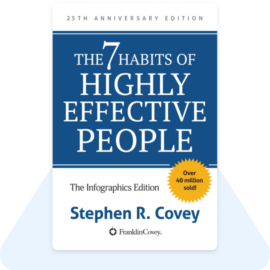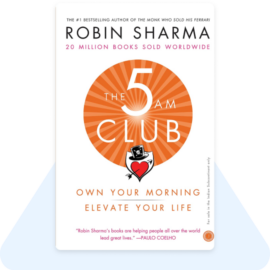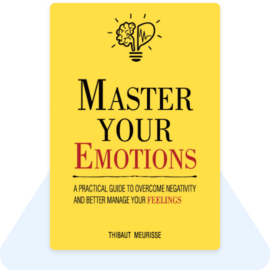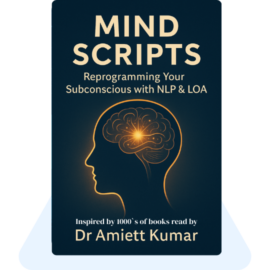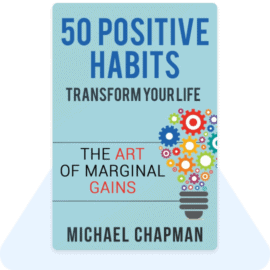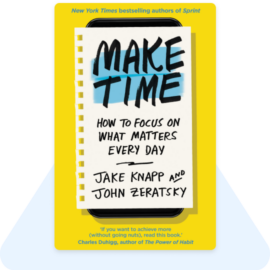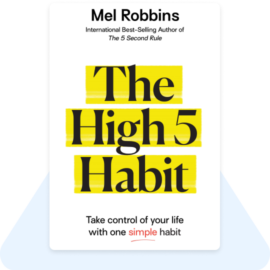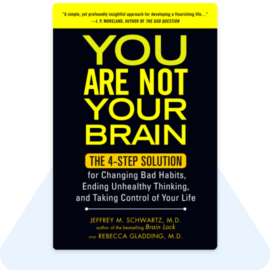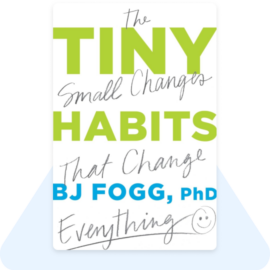Introduction: Why Self-Discipline Outshines Motivation
Every year, millions of people set resolutions: losing weight, building wealth, meditating daily, or writing a book. Yet most give up within weeks. Why? Because they rely on motivation — a feeling that is fleeting and unreliable. Motivation gets you started, but when challenges arise, it vanishes.
What separates achievers from dreamers is not bursts of motivation, but the steady force of self-discipline. Discipline is doing what must be done, even when you don’t feel like it. It is the ability to control impulses, delay gratification, and stay aligned with long-term goals.
From athletes who train daily at dawn, to spiritual masters who meditate for hours, to entrepreneurs who build empires — the secret is the same: discipline beats motivation.
This book summary explores the science and spirituality of self-discipline. We’ll see how psychology, neuroscience, and ancient wisdom align to prove that discipline is not about punishment — it is about freedom, growth, and self-mastery.
“Discipline is choosing between what you want now and what you want most.” — Abraham Lincoln
Chapter 1: Understanding the Psychology of Discipline
Before we can master discipline, we must understand its psychology. At its core, discipline is about self-regulation — the ability to manage thoughts, emotions, and actions in pursuit of higher goals.
1. Delayed Gratification — The Marshmallow Test
In the 1960s, psychologist Walter Mischel conducted the famous “Marshmallow Test.” Children were offered one marshmallow immediately or two if they could wait 15 minutes. Decades later, follow-up studies showed that children who waited grew into more successful adults — with better health, careers, and relationships.
Lesson: The ability to delay gratification is a predictor of life success.
2. Willpower as a Limited Resource
Psychologist Roy Baumeister’s research suggests willpower functions like a muscle. Use it too much, and it gets fatigued (ego depletion). But like a muscle, it can be strengthened through practice — small acts of discipline (like making your bed daily) increase overall willpower.
3. Self-Control as Freedom
Modern psychology reframes discipline not as restriction but as freedom. When you control impulses, you are no longer a slave to cravings, distractions, or moods. As Viktor Frankl wrote in Man’s Search for Meaning: “Between stimulus and response there is a space. In that space is our power to choose our response.”
4. Mindset Matters
Carol Dweck’s Mindset shows that people with a growth mindset see challenges as opportunities to improve. This belief fuels discipline, because setbacks are no longer seen as failures but as feedback.
Key Insight: Psychology proves that discipline is not about rigid control but about aligning choices with long-term values and goals.
Chapter 2: The Neuroscience of Willpower
Psychology explains the behavior of discipline, but neuroscience reveals the biology behind it. Self-discipline is not just about “trying harder” — it’s about understanding how your brain works and training it accordingly.
1. The Prefrontal Cortex — Your Command Center
The prefrontal cortex, located right behind your forehead, is the brain’s CEO. It governs decision-making, planning, and impulse control. When this region is strong and active, you can resist temptations and stay focused on long-term goals.
2. Neuroplasticity — Discipline Can Be Trained
Neuroplasticity is the brain’s ability to rewire itself based on repeated behaviors. Every time you practice self-control — whether skipping junk food or sticking to a morning routine — you strengthen neural circuits of discipline. Over time, these circuits become your default setting.
3. Dopamine and Reward Pathways
Dopamine, the brain’s “pleasure chemical,” plays a critical role in willpower. The problem today is dopamine overload from constant social media notifications, fast food, and entertainment. But when you channel dopamine toward long-term rewards (like fitness progress or financial savings), discipline feels rewarding instead of restrictive.
4. The Habit Loop and Willpower Automation
Charles Duhigg’s The Power of Habit explains how habits form: Cue → Routine → Reward. By consciously designing new loops, you make discipline automatic. For example, cue: laying out workout clothes → routine: exercising → reward: endorphin rush.
Key Insight: Neuroscience proves discipline is not innate — it’s a trainable skill. With repetition and habit design, you literally rewire your brain to become disciplined.
Chapter 3: Breaking Free from Instant Gratification
The greatest enemy of discipline is the modern culture of instant gratification. From fast food to one-click purchases to endless scrolling, we are surrounded by temptations designed to hijack our brain’s reward system.
1. Why We Crave Quick Rewards
Our ancestors lived in scarcity, so the brain evolved to grab resources immediately. In today’s world of abundance, this wiring backfires — making us impulsive and restless.
2. The Dopamine Trap
Every notification ping gives a tiny dopamine hit. This trains the brain to seek short-term pleasures instead of long-term goals. Psychologists call this the “present bias” — valuing the immediate over the important.
3. The Power of Delaying Gratification
Walter Mischel’s marshmallow experiment (Chapter 1) showed that delaying gratification predicts success. Practicing small delays — like waiting 10 minutes before checking your phone — strengthens your discipline muscle.
4. Techniques to Escape the Trap
- 20-Second Rule: Add friction to bad habits (keep junk food 20 seconds away, log out of apps).
- Temptation Bundling: Pair something you enjoy with something you resist (listen to music only while exercising).
- Replace, Don’t Resist: Instead of fighting urges, replace them with healthier options (fruit instead of sweets, walking instead of scrolling).
Book Reference: In Deep Work, Cal Newport argues that the ability to focus without distraction is the new superpower. Escaping instant gratification is the first step toward deep focus.
Key Insight: Discipline grows when you shift from short-term dopamine spikes to long-term fulfillment. Freedom is not in indulgence but in mastery.
Chapter 4: Building Keystone Habits
Not all habits are equal. Some create ripple effects across multiple areas of life — these are called keystone habits. Charles Duhigg, in The Power of Habit, defines keystone habits as behaviors that trigger positive changes in other habits automatically.
1. Keystone Habits in Action
- Exercise: Regular workouts don’t just improve health — they lead to better eating, more confidence, and higher productivity.
- Journaling: Writing daily improves self-awareness, emotional clarity, and decision-making.
- Morning Routine: Starting the day intentionally sets the tone for focus, calmness, and discipline.
2. Why They Work
Keystone habits shift self-identity. For example, when you exercise consistently, you stop identifying as someone who’s “lazy” and start identifying as a “fit, disciplined person.” Identity-level change makes discipline sustainable.
3. The Domino Effect
One small habit can topple many others. If you begin sleeping on time, you naturally wake up early, have more energy, and eat better. The single keystone habit of sleep cascades into multiple improvements.
4. Book Reference: James Clear’s Atomic Habits echoes this truth: “Habits are not just routines, they are votes for the type of person you want to become.” Keystone habits cast the most powerful votes.
Key Insight: Instead of trying to change everything at once, focus on one or two keystone habits. They will transform your personality, behavior, and results.
Chapter 5: The Role of Environment in Discipline
Discipline is not just about willpower — it is heavily shaped by environment. In fact, research shows that changing your environment often has a greater impact than relying on self-control alone.
1. Cues and Triggers
Every habit is linked to environmental cues. A phone on your desk triggers distraction. A water bottle nearby triggers hydration. By reshaping cues, you reshape behavior.
2. Friction and Flow
BJ Fogg, in Tiny Habits, explains that making good habits easy and bad habits hard is the simplest way to develop discipline. For example:
- Keep healthy snacks visible, hide junk food.
- Place books near your bed, delete distracting apps.
- Lay out workout clothes the night before.
3. Social Environment
Jim Rohn famously said: “You are the average of the five people you spend the most time with.” Surrounding yourself with disciplined, growth-oriented people naturally lifts your own standards.
4. The Architecture of Success
Designing your physical and social environment is like creating an “invisible coach” that guides you toward discipline without conscious effort.
Book Reference: In Willpower Doesn’t Work, Benjamin Hardy argues that environment, not inner grit alone, determines who thrives. Smart people design their environment so discipline becomes the default, not the exception.
Key Insight: Instead of fighting temptation with raw willpower, engineer your environment to make the right choice automatic.
Chapter 6: Willpower as Energy — Managing Your Mental Fuel
Psychologists Roy Baumeister and John Tierney, in their book Willpower, describe self-control as a finite energy source. Just like muscles get tired after exercise, your willpower weakens when overused. This explains why you may resist temptation all day, only to give in at night.
1. Ego Depletion — The Willpower Battery
Every decision and act of self-control draws from your willpower reserves. Too many choices drain energy, leaving you vulnerable to impulsive decisions. This is why Steve Jobs and Barack Obama simplified clothing choices — to save willpower for bigger decisions.
2. Rest and Recovery
Willpower is replenished by sleep, breaks, and nutrition. A tired brain craves instant gratification. Protecting rest is not laziness; it’s fuel for discipline.
3. Routines Save Energy
Habits reduce the need for willpower by automating behavior. Brushing your teeth doesn’t require effort because it’s automatic. Similarly, a fixed morning routine conserves mental energy.
4. Nutrition and Blood Sugar
Studies show that low glucose impairs decision-making. Balanced meals and hydration stabilize willpower. Even small snacks can improve self-control when energy dips.
Book Reference: Willpower: Rediscovering the Greatest Human Strength emphasizes that managing energy, not just forcing grit, is the secret to sustainable discipline.
Key Insight: Treat willpower like a battery. Charge it with sleep, food, and breaks; conserve it with routines; and spend it wisely on meaningful goals.
Chapter 7: Focus — The Multiplier of Discipline
If discipline is the engine of success, focus is the steering wheel. Without focus, disciplined effort is scattered; with focus, even small effort becomes powerful.
1. The Myth of Multitasking
Neuroscience shows the brain cannot truly multitask — it just switches rapidly, losing efficiency. Multitasking feels busy but reduces productivity.
2. Deep Work and Flow
Cal Newport’s Deep Work highlights that the ability to focus without distraction is rare but immensely valuable. Deep focus leads to “flow,” the mental state where time dissolves and peak performance emerges.
3. Attention Residue
Each time you switch tasks, part of your attention lingers on the previous one. This “residue” reduces quality and increases fatigue. Discipline means focusing on one thing deeply before moving to the next.
4. Tools to Train Focus
- Pomodoro Technique: 25 minutes of deep work + 5 minutes break.
- Single-Tasking Rituals: Block specific hours for high-priority tasks.
- Digital Minimalism: Reduce notifications, check messages only at fixed times.
Book Reference: Mihaly Csikszentmihalyi’s Flow shows that happiness itself often comes from full immersion in meaningful work — not from passive relaxation.
Key Insight: Focus amplifies discipline. The disciplined act of doing one thing at a time, deeply creates extraordinary results over time.
Chapter 8: Emotional Discipline and Self-Mastery
True discipline is not just about external habits — it is about mastering the inner world of emotions. Without emotional discipline, even the strongest routines collapse under stress, anger, or fear.
1. Responding vs Reacting
Emotional discipline means creating space between stimulus and response. Viktor Frankl, in Man’s Search for Meaning, wrote: “Between stimulus and response there is a space. In that space lies our freedom and growth.” Reactivity destroys discipline; conscious response builds it.
2. Emotional Intelligence (EQ)
Daniel Goleman’s Emotional Intelligence shows that EQ often predicts success better than IQ. Self-awareness, emotional regulation, empathy, and resilience form the foundation of self-mastery.
3. Spiritual Wisdom
The Bhagavad Gita emphasizes balance: “Samatvam Yoga Uchyate” — equanimity is yoga. A disciplined personality stays centered in success or failure, joy or sorrow.
4. Practices for Emotional Discipline
- Journaling daily emotions and patterns.
- Practicing gratitude to shift focus from lack to abundance.
- Meditation and breathwork to regulate nervous system responses.
Key Insight: Emotional discipline allows you to lead yourself first — and only then can you lead others.
Chapter 9: Discipline in Relationships and Communication
Discipline is often viewed as personal, but it shines brightest in relationships and communication. A disciplined personality earns trust, respect, and influence.
1. The Discipline of Listening
Dale Carnegie taught that listening with genuine interest is one of the most powerful social skills. Resisting the urge to interrupt is a discipline that transforms conversations.
2. The Discipline of Words
Proverbs remind us: “Death and life are in the power of the tongue.” Practicing restraint in speech — avoiding gossip, anger, or careless remarks — builds credibility and respect.
3. Boundaries and Consistency
Healthy relationships require discipline in setting boundaries and showing up consistently. Unreliability erodes trust; consistency strengthens it.
4. Empathy as Discipline
It takes effort to step out of your own perspective and see through another’s eyes. But empathy is a discipline that deepens connections and reduces conflict.
Book References:
- How to Win Friends and Influence People (Dale Carnegie) — social discipline through kindness and respect.
- Nonviolent Communication (Marshall Rosenberg) — disciplined speech that expresses needs without blame.
Key Insight: Discipline in relationships is not about control, but about consistency, kindness, and integrity — the cornerstones of a memorable personality.
Chapter 10: Spiritual Roots of Discipline
While modern psychology and neuroscience frame discipline as a mental skill, Indian wisdom treats it as a spiritual practice. In Sanskrit, the word “Tapas” means heat, austerity, or inner fire — the discipline that burns impurities and strengthens the soul.
1. Tapas (Austerity)
Patanjali’s Yoga Sutras list Tapas as one of the Niyamas. It means willingly enduring challenges for higher growth. Waking up early, fasting, or meditation are all forms of Tapas that strengthen willpower and character.
2. Sankalp (Intention)
Discipline begins with intention. In Vedic rituals, every practice starts with a clear Sankalp. Similarly, setting intentions like “I will act with compassion” or “I will stay disciplined in my study” channels energy toward growth.
3. Swadhyaya (Self-Study)
Continuous self-reflection and reading sacred texts refine personality. Today, reading self-help or spiritual books continues this tradition of learning and self-improvement.
4. Gita’s Wisdom
The Bhagavad Gita emphasizes equanimity: “योगस्थः कुरु कर्माणि” (Yogasthaḥ Kuru Karmāṇi) — perform your duties with balance. True discipline is not harsh control but alignment with dharma (right action).
5. Examples of Disciplined Masters
- Swami Vivekananda: His fearless self-discipline inspired youth across the world.
- Mahatma Gandhi: His discipline of truth and non-violence moved millions without force.
Key Insight: Spiritual traditions see discipline not as punishment, but as freedom from lower impulses and alignment with the higher self.
Chapter 11: Common Pitfalls in Practicing Discipline
Discipline is powerful, but many people misunderstand or misuse it. Here are the most common pitfalls:
1. The All-or-Nothing Trap
Many expect perfection — either total discipline or none at all. This leads to burnout and guilt. True discipline is consistency, not perfection.
2. Over-Discipline and Rigidity
Extreme discipline without flexibility can make life joyless. Balance is key — discipline should support growth, not suffocate it.
3. Burnout from Willpower Overload
Relying only on willpower without rest or habits leads to exhaustion. Discipline must be paired with recovery and smart environment design.
4. Perfectionism
Trying to be flawless creates anxiety and paralysis. Discipline should aim for progress, not perfection.
5. Knowledge Without Action
Reading books or attending workshops without application creates “illusion of progress.” Real discipline is applying one lesson daily, not hoarding knowledge.
Book Reference: In The 7 Habits of Highly Effective People, Stephen Covey warns against being “busy without effectiveness.” Discipline must be purposeful.
Key Insight: Avoid extremes. Discipline is not about punishing yourself, but about steady, flexible progress.
Chapter 12: Designing a Life of Discipline and Freedom
Discipline may sound restrictive, but paradoxically, it is the gateway to freedom. When you are undisciplined, you are enslaved by impulses, moods, and distractions. When you are disciplined, you are free to pursue higher goals without being pulled off course.
1. Daily Rituals of Self-Mastery
Successful people don’t wait for discipline to appear — they design their day around it. Morning meditation, gratitude journaling, exercise, or reading act as anchors that keep the mind focused and stable.
2. Habit Stacking and Identity Shifts
James Clear, in Atomic Habits, teaches that adding small, positive habits to existing routines makes them stick. Over time, these habits reinforce a new identity: “I am disciplined, consistent, and resilient.”
3. Balance Between Effort and Rest
Discipline is not about grinding endlessly. It is about cycles of focused effort and intentional rest. Work deeply, then rest fully — both are forms of discipline.
4. Service and Purpose
The highest form of discipline comes from aligning with a purpose greater than yourself. Gandhi’s discipline was not self-centered; it was rooted in service. When your why is strong, discipline flows naturally.
5. Designing Freedom Through Structure
Ironically, the more structure you build, the more freedom you enjoy. For example: financial discipline creates financial freedom, health discipline creates energy freedom, emotional discipline creates relationship freedom.
Key Insight: Discipline is not about restricting life but designing it intentionally so you are free to live your highest potential.
Conclusion: The Journey to Your Best Self
Self-discipline is not about willpower alone, nor is it about rigid control. It is about alignment — aligning daily actions with your deepest values and long-term vision.
- Psychology shows discipline is the ability to delay gratification and reframe choices.
- Neuroscience proves discipline can be rewired into the brain through habits and focus.
- Spiritual wisdom reminds us that discipline (Tapas) is the fire that purifies the soul and reveals the higher self.
From the Marshmallow Test to Atomic Habits, from the teachings of the Bhagavad Gita to modern neuroscience, the message is clear: discipline is the bridge between goals and achievements.
You don’t need to start big. Begin with one habit. Wake up 10 minutes earlier. Meditate for 5 minutes. Write one page a day. Each small act is a vote for your disciplined self. Over time, these votes add up, shaping your identity, your destiny, and your freedom.
As Swami Vivekananda said: “Arise, awake, and stop not till the goal is reached.” That is the essence of self-discipline — steady, relentless progress toward becoming your best self.
Final Thought: Discipline is not punishment. Discipline is self-love in action.
Check out more pointers:
- Vision Craft: Harnessing Mental Imagery to Shape Reality
- 7 Relationship Habits That Block Manifestation & How to Transform Them for Lasting Love & Abundance


